News
All the latest news and stories about the scheme.
Scheme Newsletters
You can access the digital version using the links, under 'Newsletters' on this webpage, and also read information from these editions in the 'News Feed' below.
Want to be kept updated? You can subscribe to our mailing list using the pop-up form on our home page or by emailing us at PevenseyandEastbourneCoast@environment-agency.gov.uk.
If you have any questions or would like to provide feedback, please contact us at PevenseyandEastbourneCoast@environment-agency.gov.uk
All the latest news and stories about the scheme.
Scheme Newsletters
You can access the digital version using the links, under 'Newsletters' on this webpage, and also read information from these editions in the 'News Feed' below.
Want to be kept updated? You can subscribe to our mailing list using the pop-up form on our home page or by emailing us at PevenseyandEastbourneCoast@environment-agency.gov.uk.
If you have any questions or would like to provide feedback, please contact us at PevenseyandEastbourneCoast@environment-agency.gov.uk
-
Pevensey Beach - the week ahead (1 December 2025)

We are keeping a close eye on the weather and getting ready for this week’s spring tides.
The latest forecast suggests strong southerly winds on Monday, shifting to south-westerly on Tuesday, with waves up to 3 metres. Conditions should ease as tides peak later in the week, but we will continue to monitor this closely.
To prepare, we have stockpiled shingle along the beach crest in several locations. This helps us respond quickly to any erosion, as high tides in the mornings will limit access to the lower beach. Our teams and machinery are ready to recycle and reposition shingle where needed.
We have also completed bypass operations from White Point and rebuilt the beach crest at key areas including Normans Bay, Beachlands, Sea Road car park, and more. Around 6,300 m³ of shingle has been moved to strengthen the frontage.
We will also move machinery from White Point to Pevensey Beach and continue with two recycling teams to repair any erosion caused by the spring tides this week.
 Machinery along the beach crest near Normans Bay
Machinery along the beach crest near Normans Bay Bulldozer moving shingle as part of beach works at Normans Bay east
Bulldozer moving shingle as part of beach works at Normans Bay east  The beach off Old Martello Road
The beach off Old Martello Road -
Pevensey Beach - the week ahead (21 November 2025)

A quick note to let you know we will be carrying out what we call our bypass operations next week. This is where we use trucks to move material from Langney point by round around to Pacific Drive and tip West of Martello tower No.64.
We’ll have 6 tipper trucks running all week, Monday to Friday. Then if there is enough material we will continue through the first part of w/c 1st Dec.
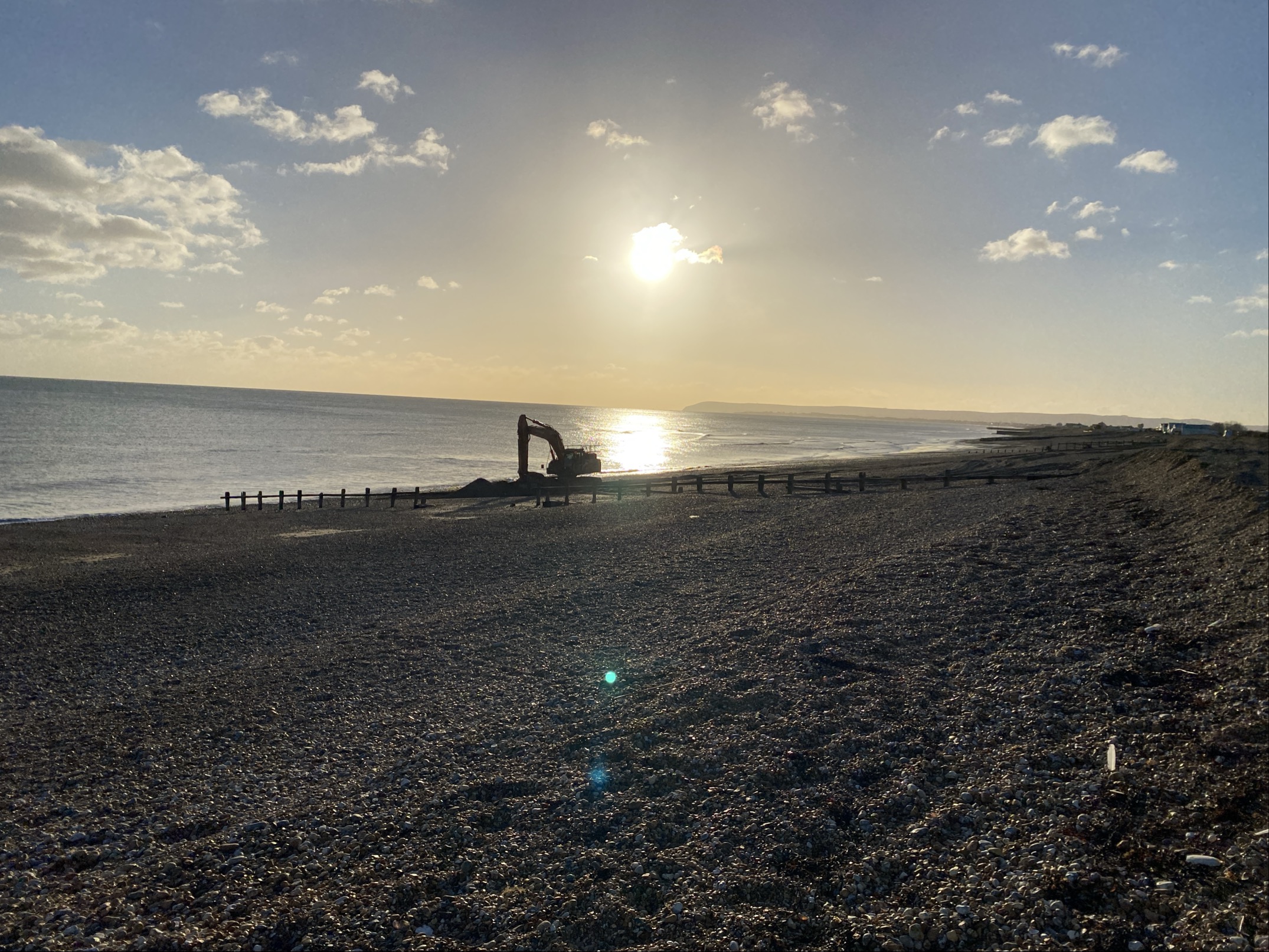
We plan to recycle from the groynes at Cooden all next week. However we may have to delay that a day or 2 should we get any erosion through the weekend and Monday.
We have our eye on the spring tides w/c 1st Dec and will continue to have the beach ready.
Thank you for all the positive friendly comments when we’ve met on the beach. These are warmly received by all of the team. All of us want to do the best job we can to help keep you safe and share the beach with you.
-
Pevensey Bay beach works update - 14 November 2025

Following last week’s spring tides, our team has been rebuilding the beach crest to maintain protection. We’ve expanded operations with two recycling teams working at opposite ends of the beach, moving shingle to areas that need it most.
This week, work focused on Normans Bay, Deloram, East Stream, and Herbrand beach huts, as well as sections near Pevensey Sailing Club and Old Martello Road. These efforts help repair storm damage and keep the beach resilient.
Next week, high tides during the day will limit access, but we’ll continue using stockpiles and moving material where possible. We’re also preparing for upcoming works at Langney Point and plan to return to Cooden beach later in the month to recycle more shingle.
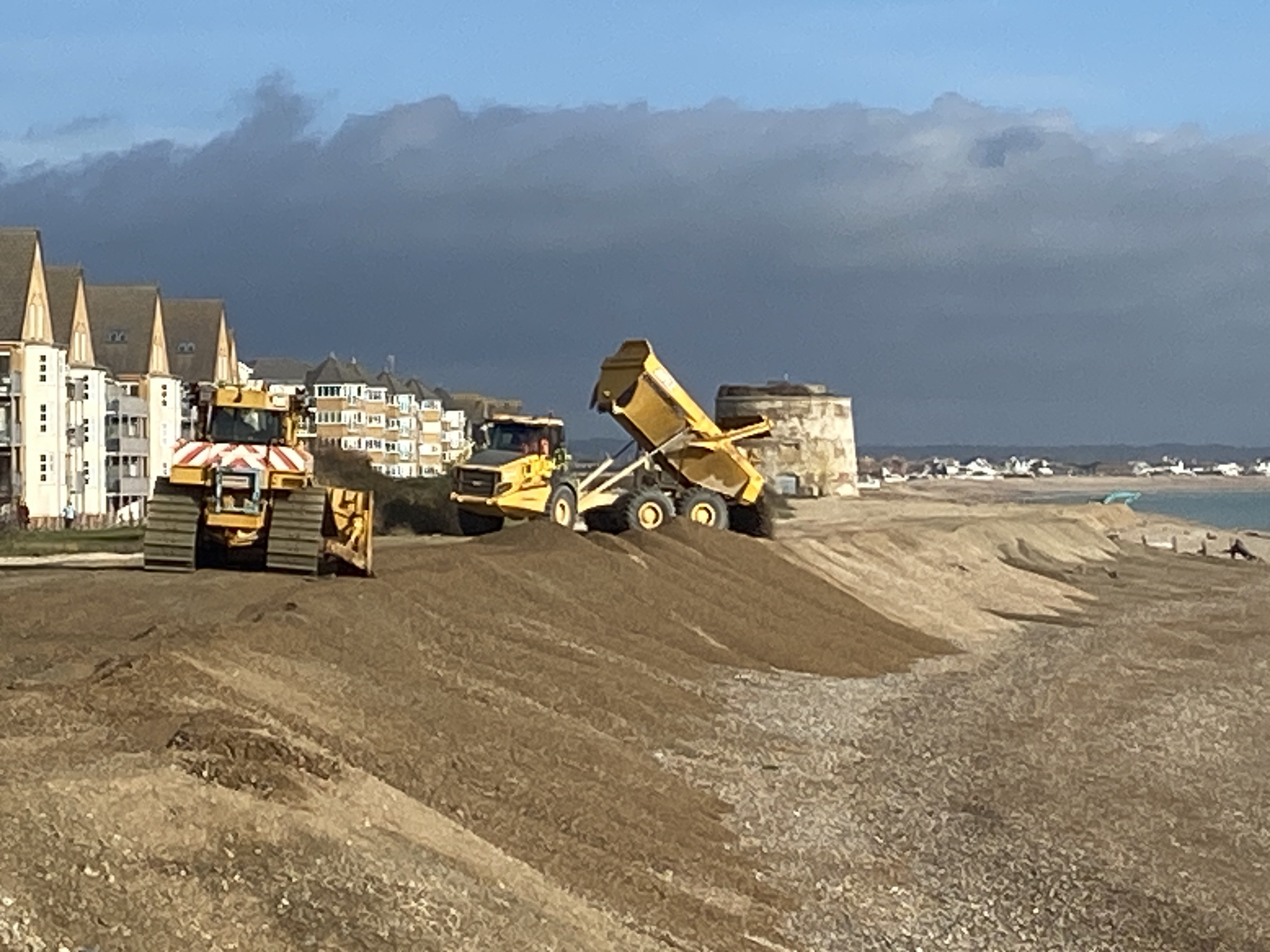
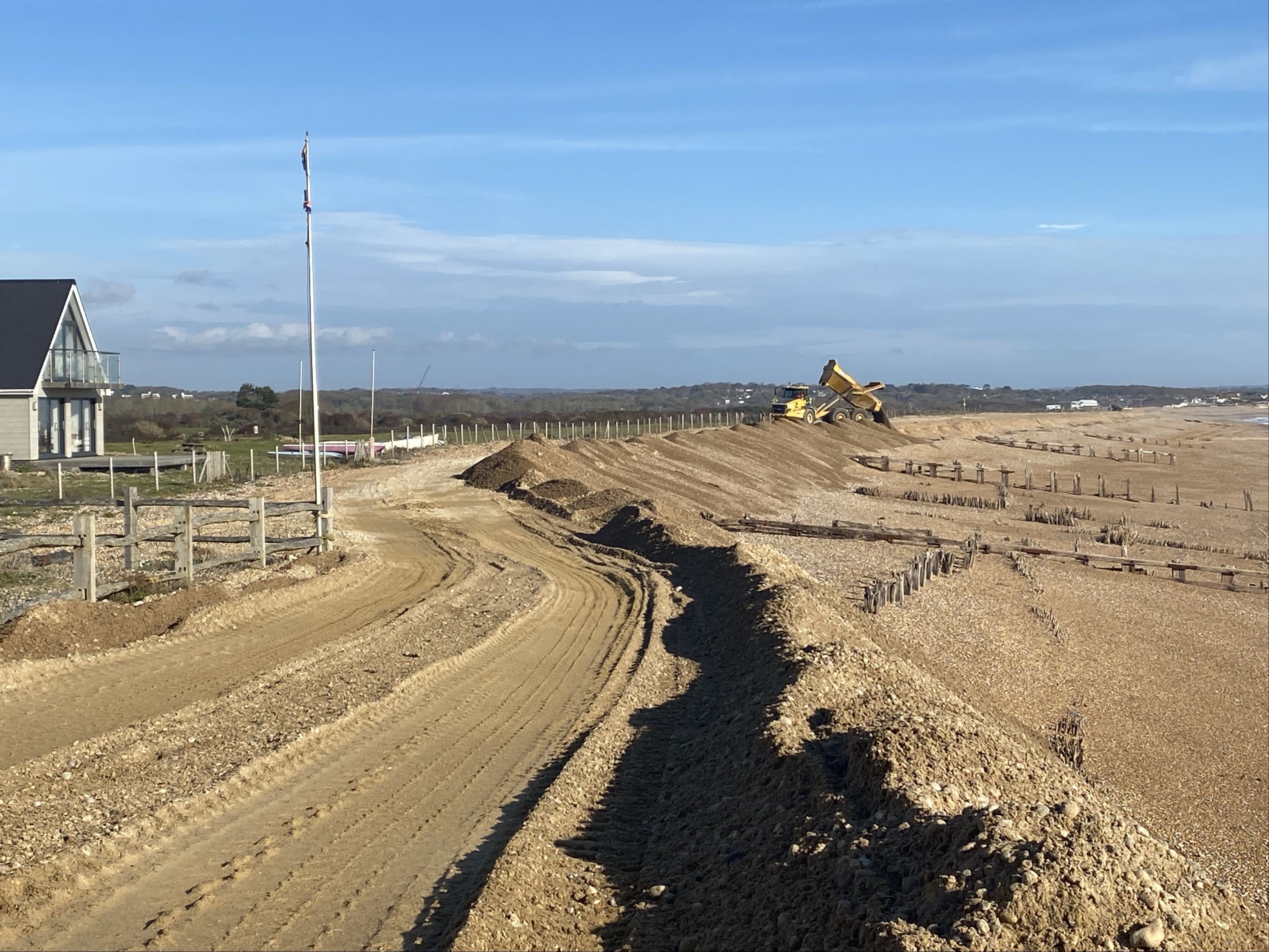
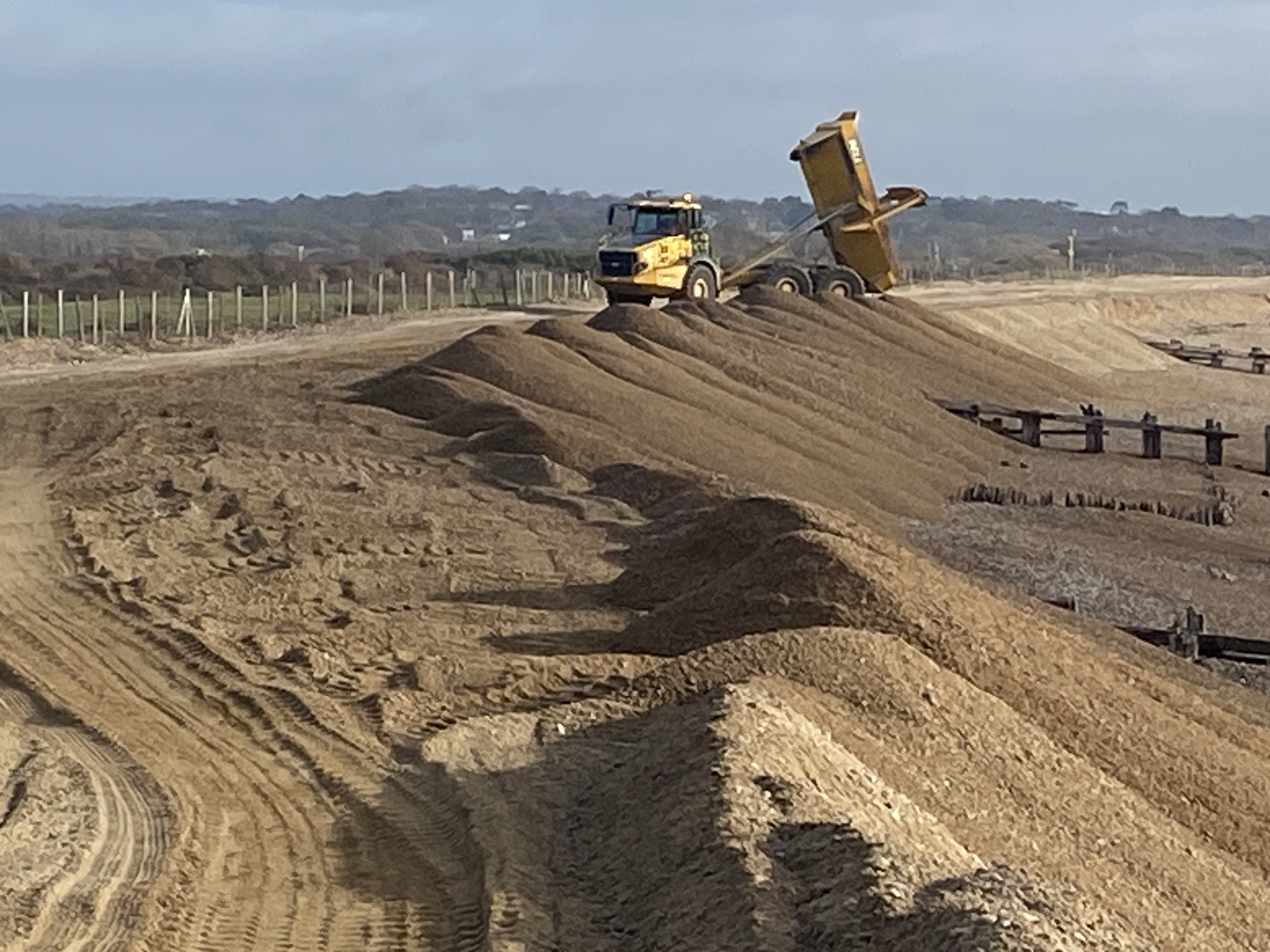
-
Pevensey Bay beach works update - 30 October 2025

This week we’ve been busy moving shingle from the Cooden stockpile to areas that need it most, including East Stream and Deloram. Our team also rebuilt sections of the haul road after recent high tides caused damage.
Two additional machines have been working to the west of Old Martello Road and the other at Beachlands, Normans Bay east and west. Next week, with high tides during the day, we’ll continue recycling shingle and plan to return to Cooden soon to move the remaining material.
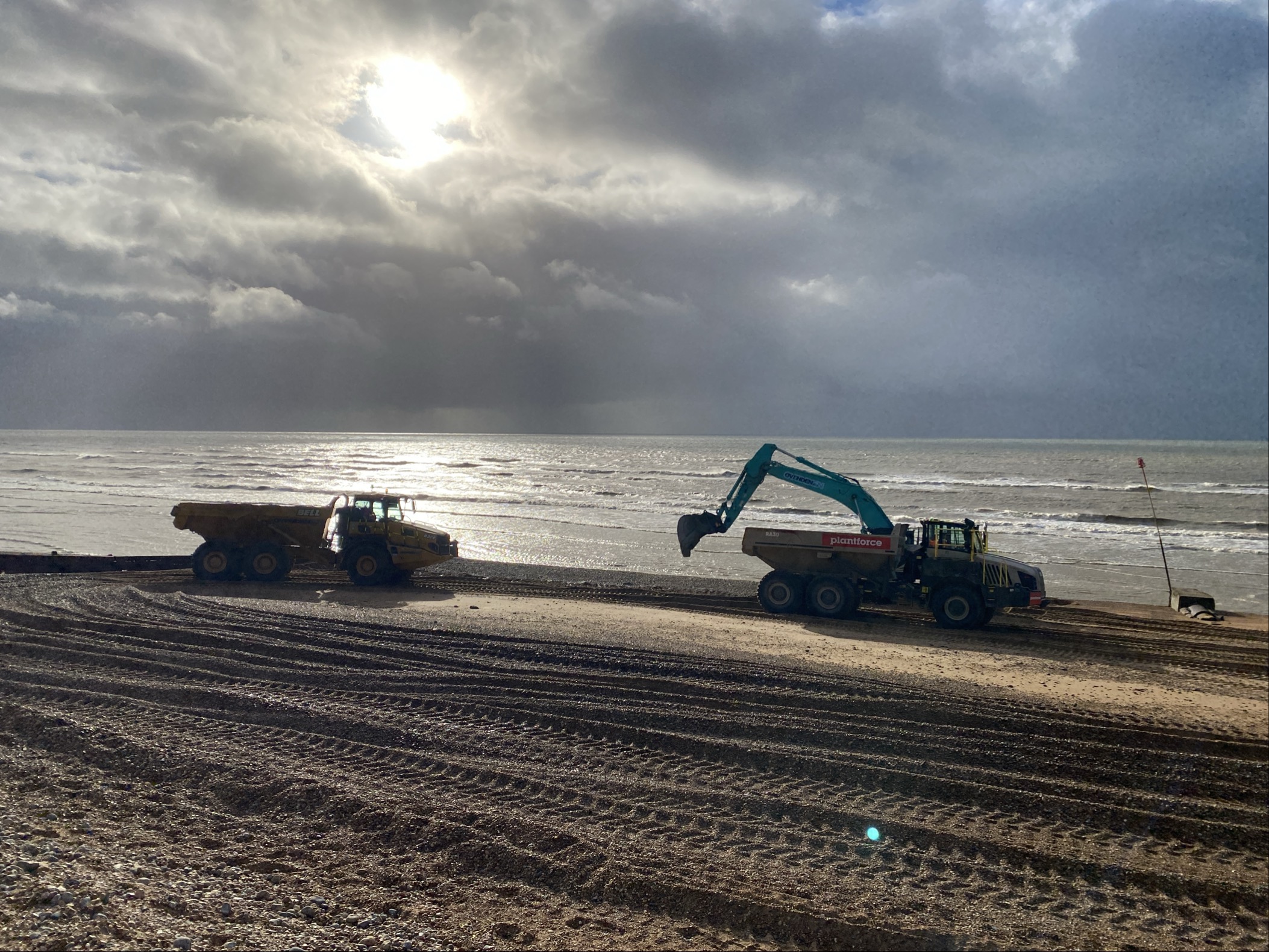
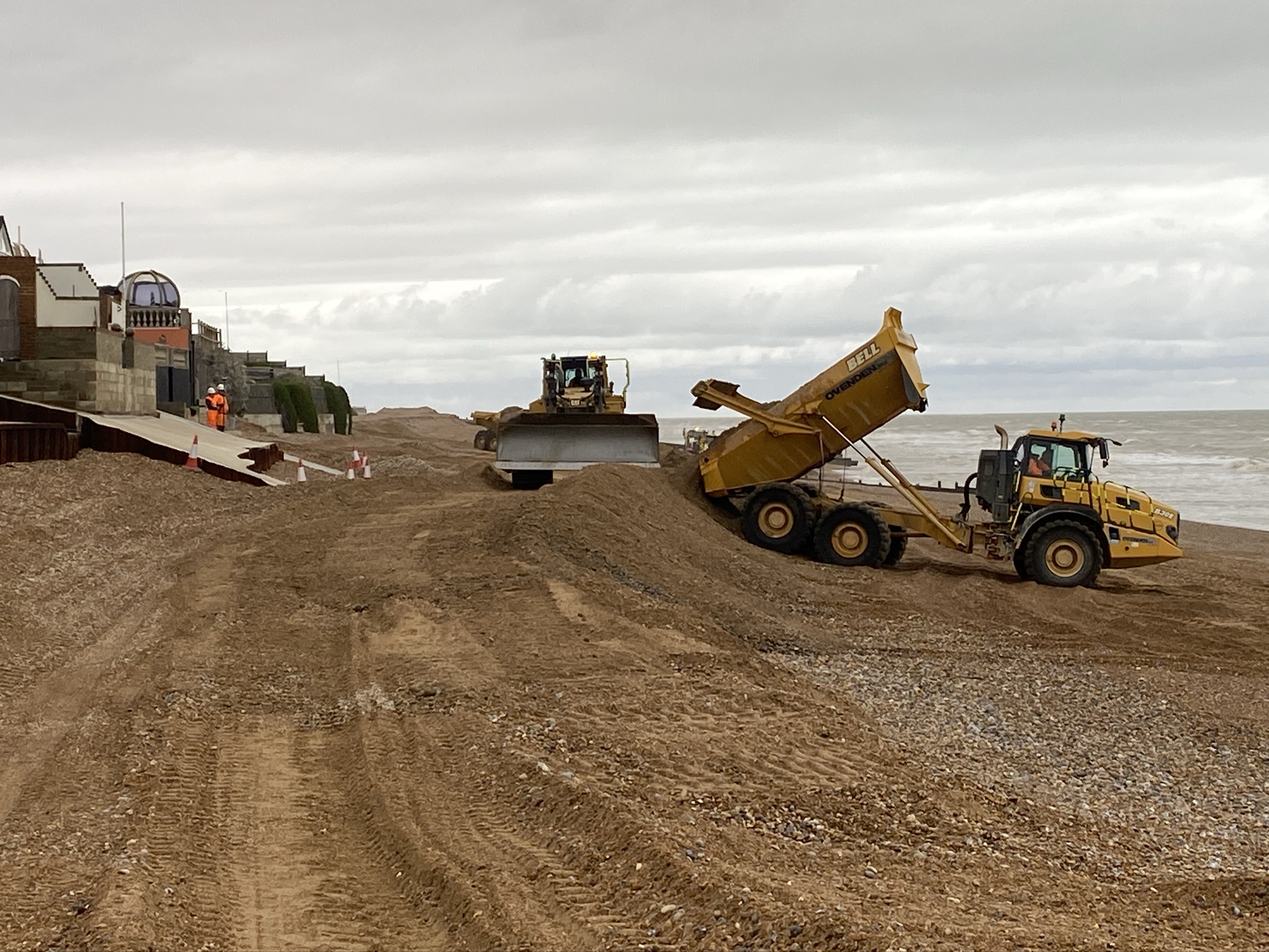
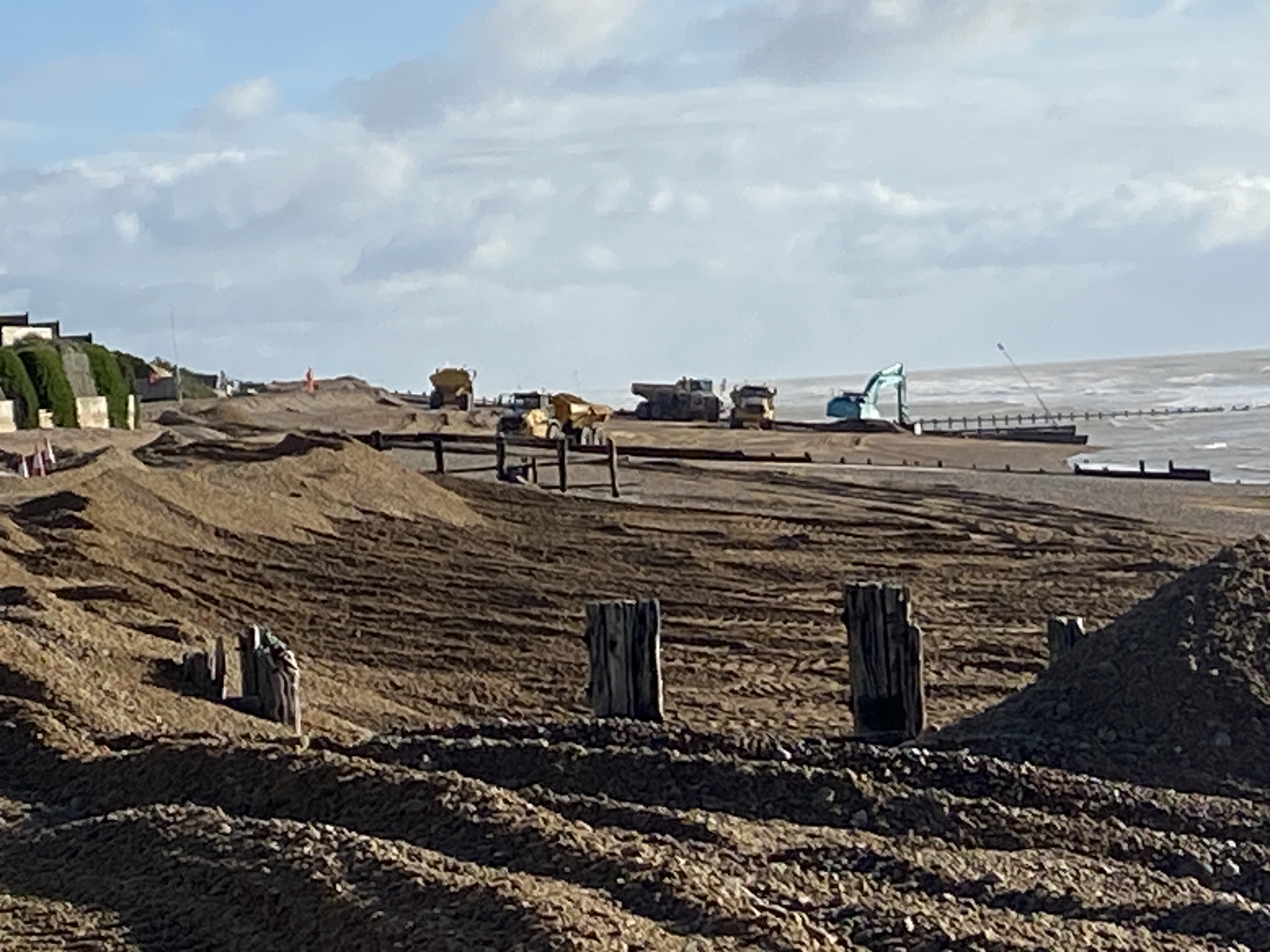
-
Storm Benjamin

Storm Benjamin brought strong winds and high waves to our coastline last week, causing some erosion at the western end of the beach near Old Martello Road. We also lost part of the Cooden shingle stockpile, but we plan to move as much as possible next week, weather permitting.
Our team has been working between tides to push up shingle and recycle material where it’s needed most. With tides dropping and winds easing, we’ll continue rebuilding ahead of the big spring tides in early November.
Thank you for your patience as we manage these challenging conditions. Every effort is focused on keeping the beach safe and resilient.
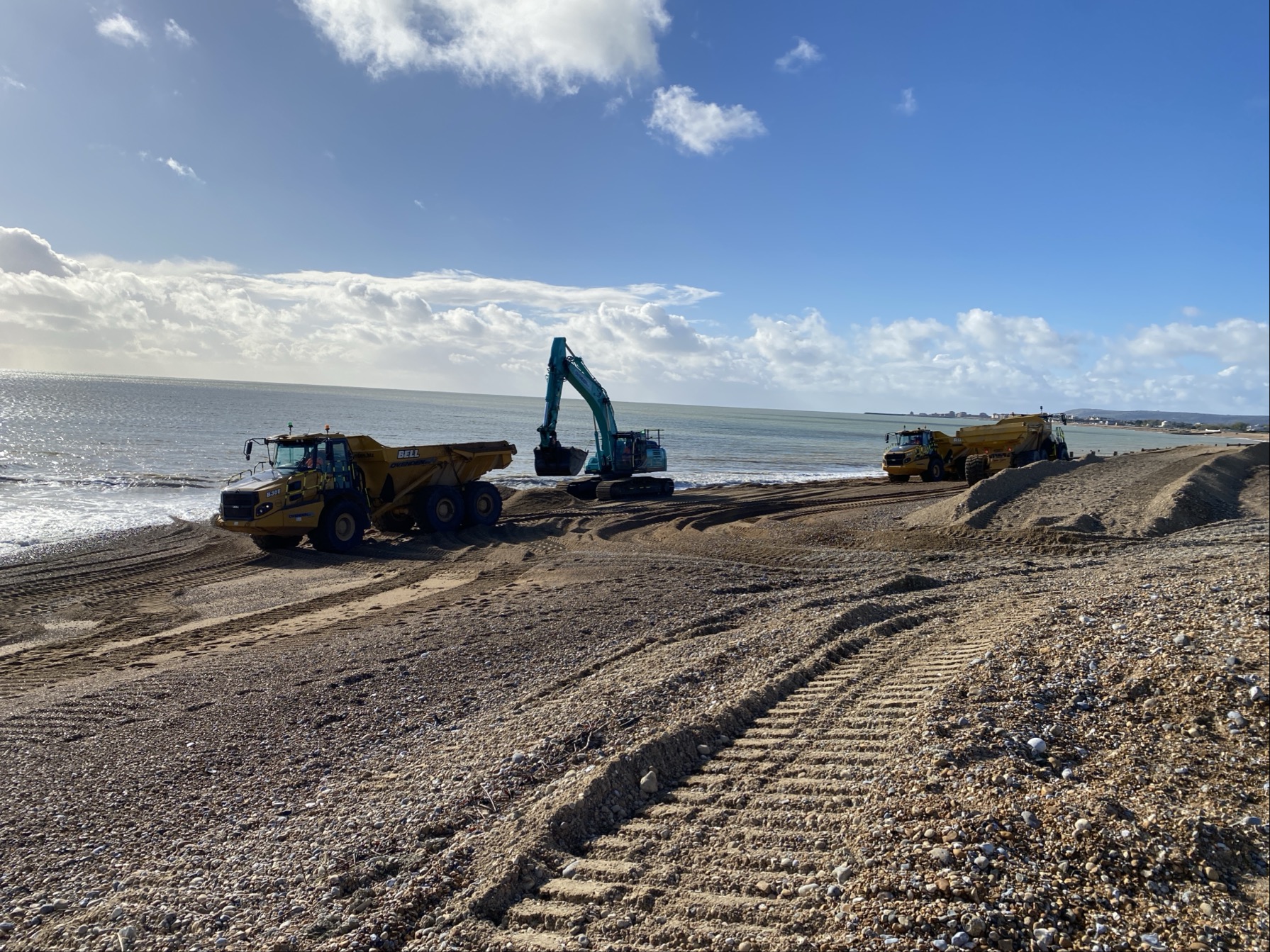
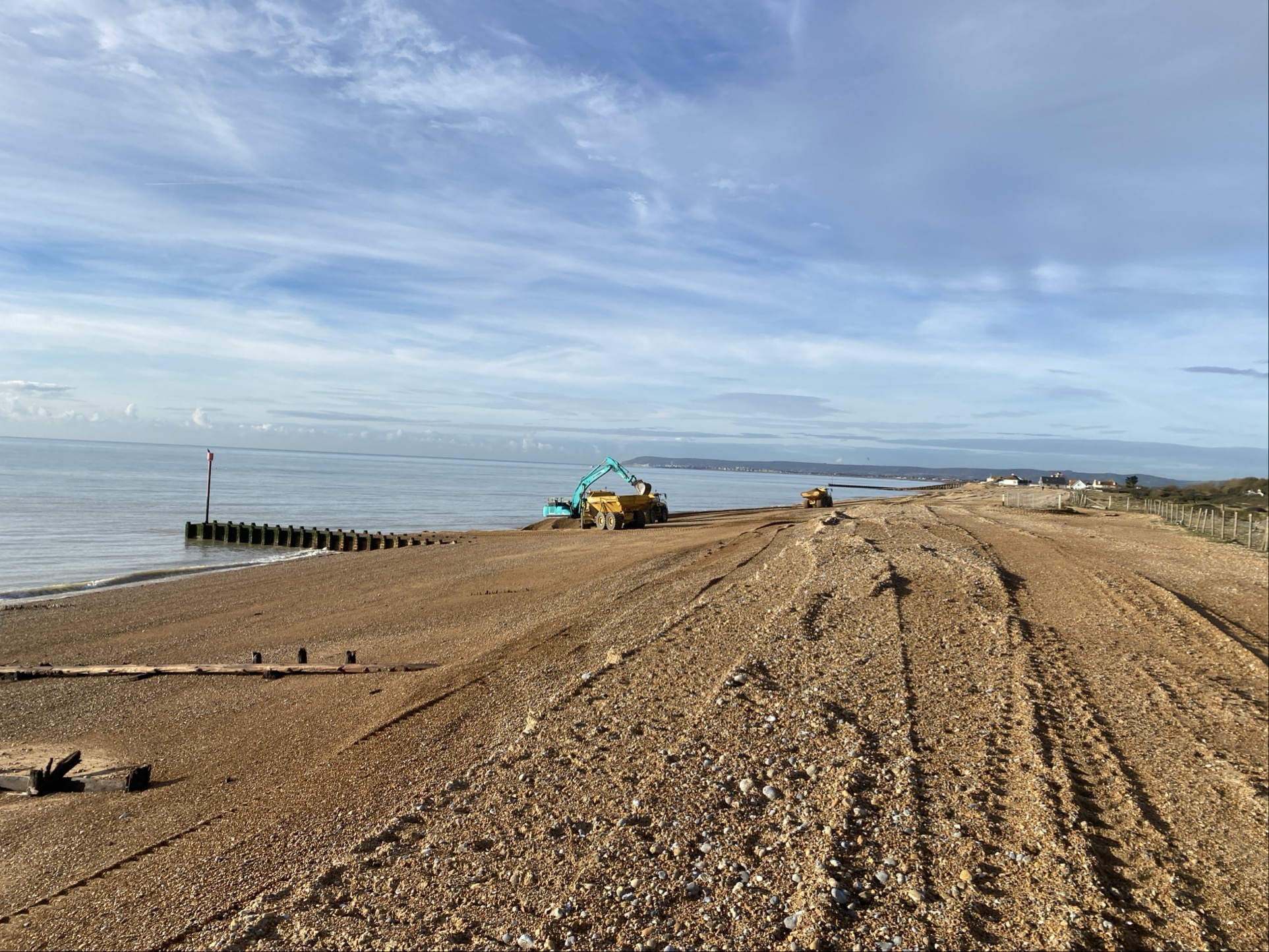
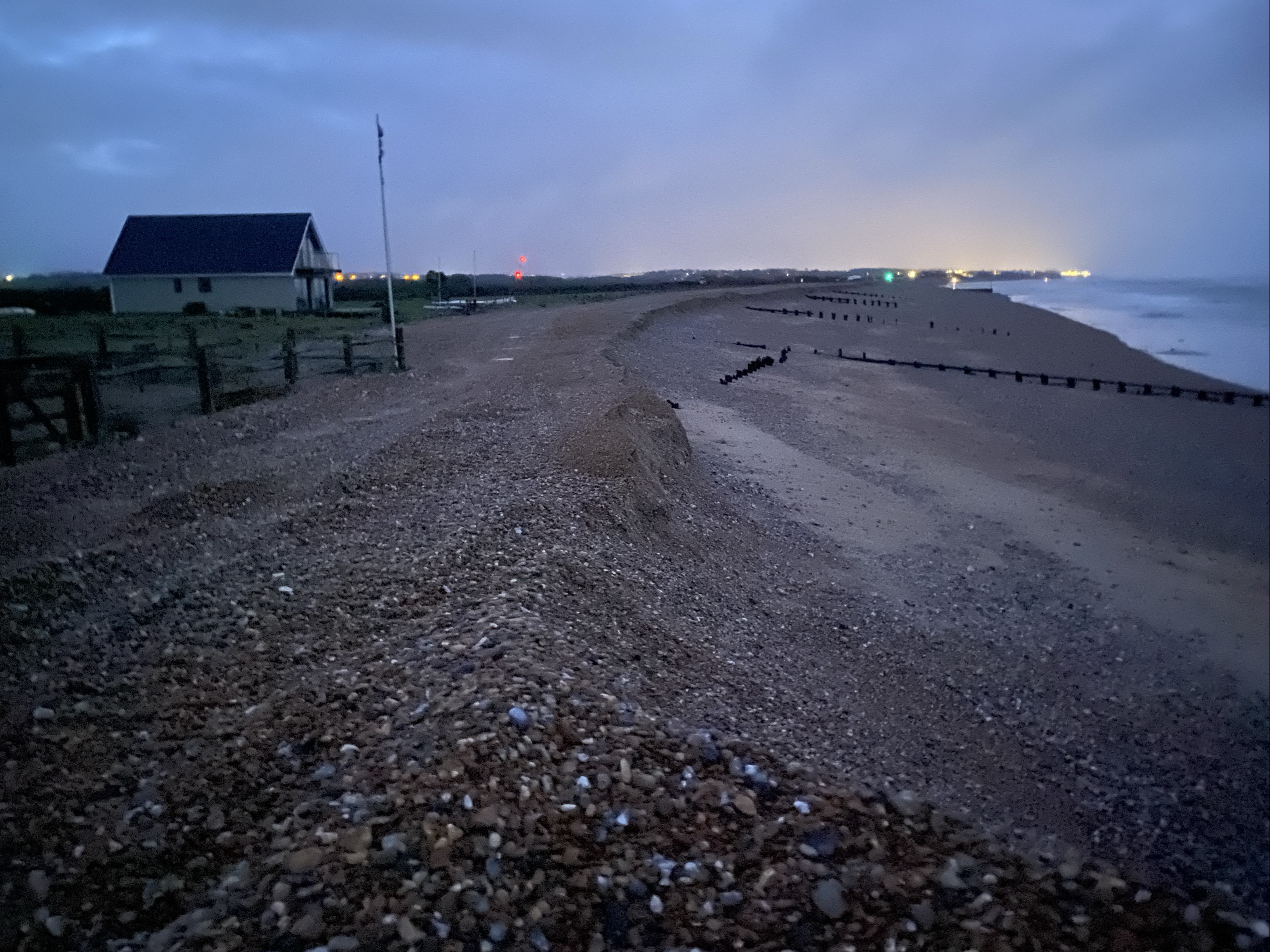
-
Normans Bay beach works update - 15 October 2025
This will be most relevant to those in the Norman’s Bay area and those who use Norman’s Bay car park:
You may have noticed some additional signs appearing and received a letter regarding works to the Outer Outfall doors at the bottom of the Wallers Haven. This work will entail replacing the outfall doors using cranes to lift them in and out. This is an EA project but is being managed by a separate team.
If you have specific questions about the outfall project, the team can be contacted directly by email at: SLTSDN.AP.Ouse.Pevensey@environment-agency.gov.uk
For the remainder of this week and the first half of next week, we expect to be recycling from East Stream / Fishing Station area through to Beachlands & Norman’s Bay East. This means the bulldozers and excavator will continue to be parked in the Norman’s Bay area.
We do appreciate that this will create a busy area over the next week. We will do all we can to minimise the impact. Please accept our apologies in advance for any inconvenience caused.
-
EA Chair Alan Lovell and Emma Reynolds MP visit Pevensey Bay

On Thursday 9 October we welcomed our Environment Agency Chair Alan Lovell and Emma Reynolds MP, Secretary of State for Environment, Food and Rural Affairs, at Pevensey. During the visit, the team demonstrated beach management activities, showcasing how shingle beach defences are maintained to reduce flood risk. Alan and Emma engaged positively with the team, asking insightful questions about our operations, the properties at risk and the environmental challenges we face. It was a great opportunity to highlight the importance of our beach management work and the dedication of our team.
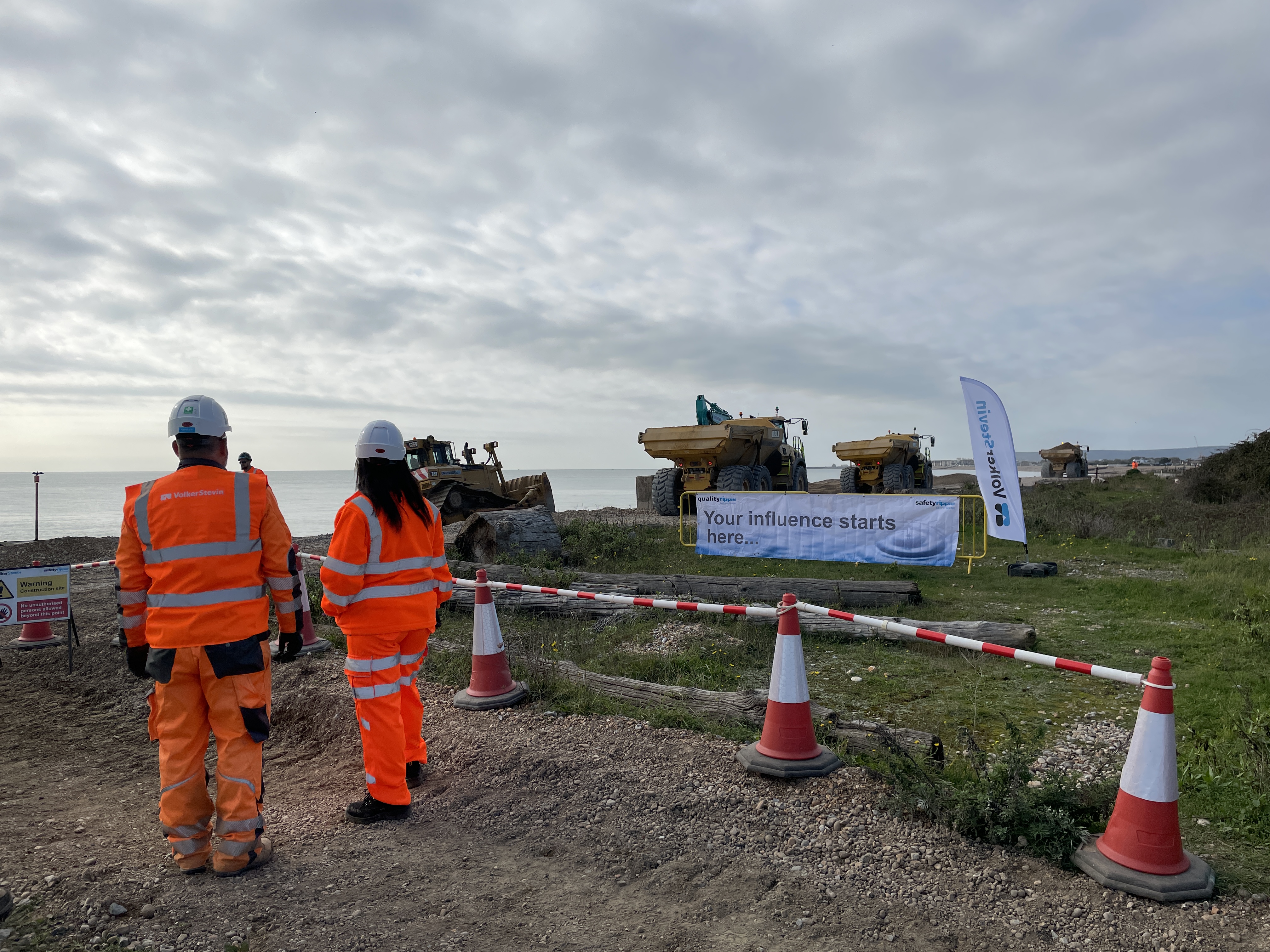
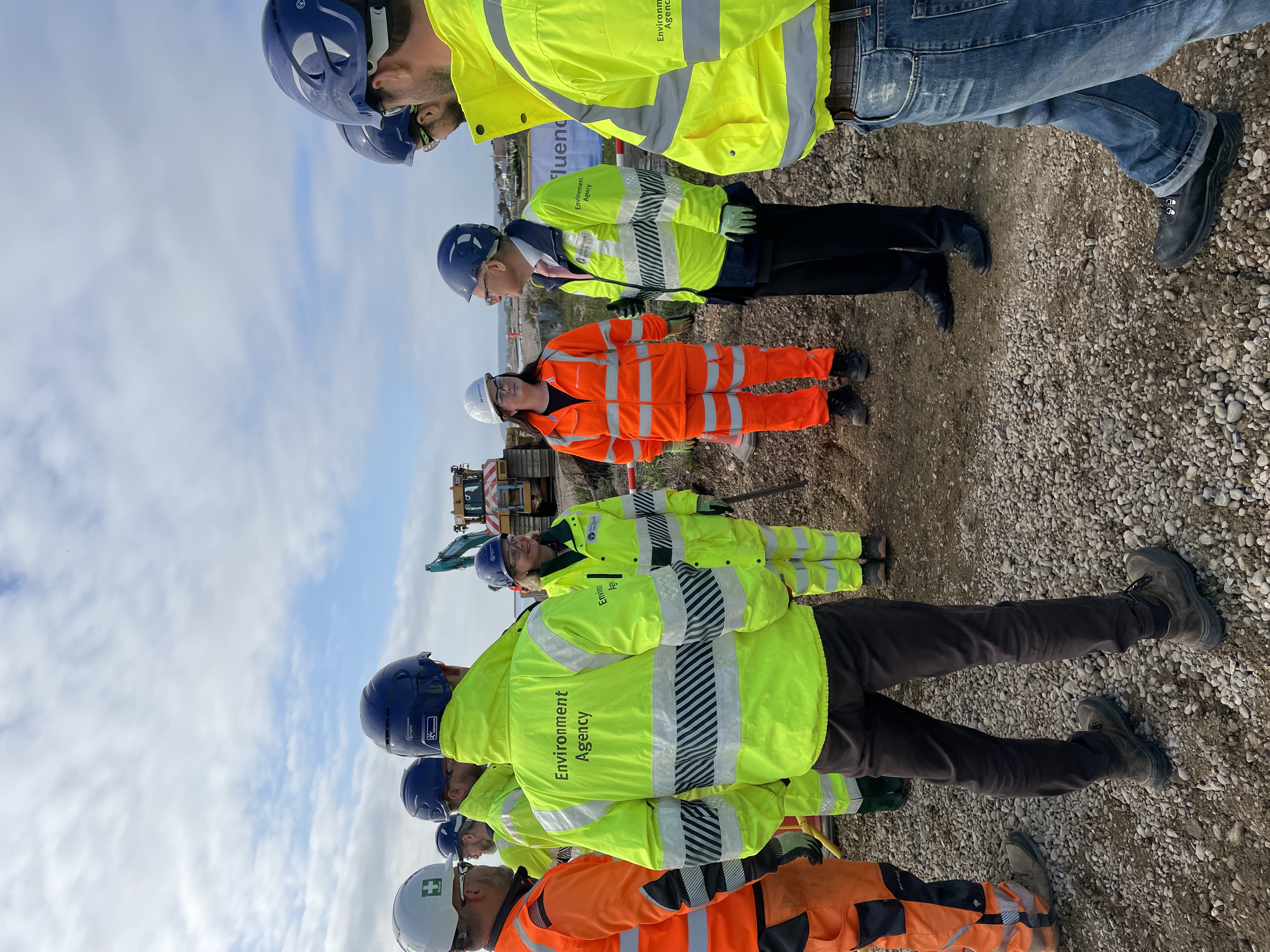
-
Exclusive Blue Heart event - 26 November 2025

Join Blue Heart and Pevensey and Eastbourne Coast for an exclusive screening of David Attenborough's OCEAN documentary, followed by a talk from the Co-Director, Keith Scholey.
Keith will discuss the making of the film, and the questions it poses about the environment and the climate crisis.
Join us on the 26th November, from 6pm (doors at 5:30pm) at the Towner Eastbourne Cinema
Book now to secure your spot!
More information and tickets available via this link: OCEAN with David Attenborough, screening and director’s talk - Blue Heart
-
Pevensey Bay beach works update - 3 October 2025
Weekend Beach Update
A quick heads-up ahead of the weekend weather:
Saturday
- Strongest winds expected after high tide (2.5m / 6.4m depending on your format).
- No surge forecast, but waves could reach up to 4m.
Sunday
- A small surge of 0.5m expected on a 3.2m / 7m tide.
- Winds easing slightly, with waves around 2.6m.
Winds will be mostly westerly, with some south-westerly gusts.
Thanks to the work completed over the past 3 weeks, the beach is well prepared for the weekend. That said, we do expect to be back rebuilding on Monday 6 October.
This past week, we’ve been recycling material from Herbrand Walk Beach huts, the fishing station, and East Stream areas to Normans Bay.
Next week, we’ll be recycling westward from the depot, with bulldozers reprofiling the most eroded areas. They’ll track along the bottom of the beach where possible, but there may be times when that’s not feasible.Machine speed has been raised as a concern — and rightly so. We take safety very seriously and are actively monitoring and controlling speeds.
Next week: Drone Surveys
Starting next week, likely from Wednesday 8 October we’ll be conducting drone surveys from Sovereign Harbour to Cooden Beach Hotel. These will run for up to 3 weeks, weather permitting.A quick reminder:
If you're planning any work within 16m of the beach, a Flood Risk Activity Permit is required — even if you own the land. Our own teams must apply for these permits, which are approved by the Environment Agency.
More info here https://www.gov.uk.uk/guidance/flood-risk-activities-environmental-permitsIf you are uncertain about whether a permit is required or wish to discuss an issue further you can email us at- pevenseyandeastbournecoast@environment-agency.gov.uk
Thanks for your continued support and stay safe out there!
-
Pevensey Bay beach works update - 12 September 2025
 This week, the Sospan Dau has been spraying shingle along the coast at Sovereign Harbour. It's scheduled to return on Tuesday 16 September (weather permitting) to continue work.Sunday 14: We have been adapting to the recent weather conditions and will now be mobilising 3 bulldozers onto the beach. They will be working 3 hours either side of low tide, during daylight hours only.Where they’re heading:1 bull dozer will head to Norman’s Bay2 bull dozers will move west from the EA depot, passing Sea Road car park, Leyland Road, and on to Old Martello RoadWednesday 17th: More machinery will arrive to begin recycling operations on the beach.A quick favour – If you live along the beach frontage, please remove temporary fencing and move any furniture to allow safe access for the machines. Your help is greatly appreciated!Thanks for your continued support as we adapt to the weather and keep things moving forward.
This week, the Sospan Dau has been spraying shingle along the coast at Sovereign Harbour. It's scheduled to return on Tuesday 16 September (weather permitting) to continue work.Sunday 14: We have been adapting to the recent weather conditions and will now be mobilising 3 bulldozers onto the beach. They will be working 3 hours either side of low tide, during daylight hours only.Where they’re heading:1 bull dozer will head to Norman’s Bay2 bull dozers will move west from the EA depot, passing Sea Road car park, Leyland Road, and on to Old Martello RoadWednesday 17th: More machinery will arrive to begin recycling operations on the beach.A quick favour – If you live along the beach frontage, please remove temporary fencing and move any furniture to allow safe access for the machines. Your help is greatly appreciated!Thanks for your continued support as we adapt to the weather and keep things moving forward.
Watch videos relating to the project - Stormy seas and beach replenishment on Eastbourne beach
-
Click here to play video Beach replenishment on Eastbourne beach Thank you to our colleague at Eastbourne Borough Council for sharing this short video of beach replenishment in action! There are no words spoken in this video.
-
Click here to play video Storm Video - Pevensey Bay Thank you to Richard Barrett, a local resident, for sharing this video of a recent storm along the coast at Pevensey Bay
-
Click here to play video Storm video - Pevensey Bay Another video showing the storm along the coast of Pevensey Bay - thank you to Richard Barrett for sharing!





